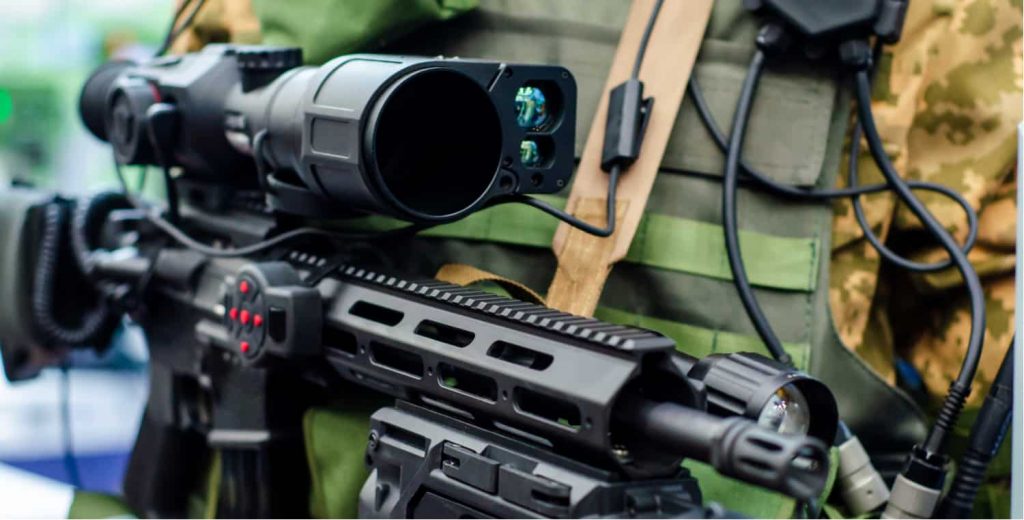Scopes are an important firearm accessory for hunters and additional features can help you get the most benefit out of your optics. Night vision for scopes is one example. This technology allows you to see more clearly in low light conditions and is essential for night hunting.
Here is how night vision works:
Traditional Optoelectronic Image Enhancement
Older scopes use optoelectronic image enhancement and the technology in newer night vision scopes is also based on this traditional method.
The way it works is that light enters the scope through the objective lens. This captures both visible light and infrared light (which you cannot see with the naked eye). The light then enters an image-intensifier tube, which creates a vacuum using electricity. The first part of the image-intensifier tube converts photons (particles of light) into electrons (small charged particles). These then move to the microchannel plate (MCP). This is a glass disk with a large number of tiny holes. When the electrons pass through these holes, they multiply and increase the electric signal. The electrons then hit a phosphor-coated screen that lights up where the electrons hit it. This creates a green image that you can view through the scope’s ocular lens.
The image is green because when the photons are converted into electrons, it is impossible to preserve the color. Manufacturers of night vision scopes chose to make the image green instead of another color or black and white because our eyes are more sensitive to green light. Green images are also easier to look at for long periods of time without straining your eyes.
Digital Night Vision Scopes
Traditional night vision scopes can be heavy and bulky. Although they use similar principles to optoelectronic image enhancement, digital scopes use digitization instead of multiple lenses to amplify light. This allows them to be smaller and lighter.
Like with a traditional scope, light first enters a digital night vision scope through the objective lens. A complementary metal-oxide semiconductor (CMOS) sensor, which is the same type of sensor a digital camera uses, converts the light into a digital signal. The scope then magnifies this image several times and enhances it electronically. Finally, the image is transported to a screen in the scope for viewing. Some models also let you connect, store, or stream the video for remote viewing using other devices.
Choosing the Right Night Vision Scope
If you want to hunt at night, the proper scope is essential. However, it can be difficult to find the best option for you when there are so many different varieties available. The same principles that help you choose any scope apply when choosing a scope with night vision. You should think about how you will actually use your optics and make sure that using the scope feels natural.
Night Vision Scopes at The Hub
You can browse our selection of night vision optics online or in either of our two physical Arizona gun stores. Our gun experts can help you determine which scopes fit your needs and we are happy to answer any questions you may have.












